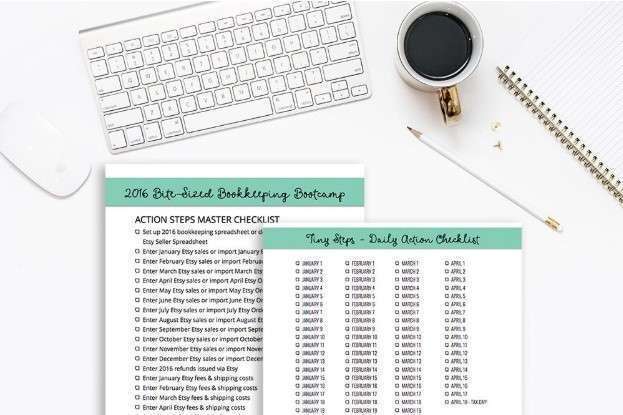This deferred payment period can be regulated by law depending on the jurisdiction; in countries like France, Italy, or Spain, it usually ranges from 30 to 90 days after the purchase. Provisions are included on the payee’s rights in the event of a default, which may include the maker’s assets being foreclosed. At the end of the three months, the note, with interest, is completely paid off. Over 1.8 million professionals use CFI to learn accounting, financial analysis, modeling and more. Start with a free account to explore 20+ always-free courses and hundreds of finance templates and cheat sheets. Our mission is to empower readers with the most factual and reliable financial information possible to help them make informed decisions for their individual needs.
The principal amount, any interest rate, the parties, the date, the terms of repayment (which may include interest), and the maturity date are usually included in terms of a note. A note receivable of $300,000, due in the next 3 months, https://turbo-tax.org/ with payments of $100,000 at the end of each month, and an interest rate of 10%, is recorded for Company A. And we have an entire page that talks about convertible notes and some of their accounting (and strategic) implications.
Installment payments are commonly used to finance large purchases such as cars, boats, and appliances. Payments are usually made in equal monthly installments, including interest until the principal balance (the total amount borrowed) is paid off. P/Ns vary from IOUs (“I owe you”) in that they include a specific promise to pay, the stages and timeline for repayment, and the consequences if repayment is not completed. When they are, it is usually at the behest of a struggling company working through unscrupulous brokers who are willing to sell promissory notes that the company may not be able to honor. The promissory note describes the debt’s amount, interest rate, and late fees. A lender holds the promissory note until the mortgage loan is paid off.
- Notes Receivable record the value of promissory notes that a business owns, and for that reason, they are recorded as an asset.
- Get instant access to lessons taught by experienced private equity pros and bulge bracket investment bankers including financial statement modeling, DCF, M&A, LBO, Comps and Excel Modeling.
- Key features of convertible notes often include a valuation cap and a conversion discount.
- A vehicle P/N is an agreement between a borrower and a lender to make payments in exchange for a car.
- P/Ns vary from IOUs (“I owe you”) in that they include a specific promise to pay, the stages and timeline for repayment, and the consequences if repayment is not completed.
- These notes are initially considered Long-Term Liabilities but may convert to equity based on specific triggers, offering an effective and flexible financing option for early-stage companies.
If this is the case, we will need to reclass our accounts payable to the notes payable for the amount that is stated in the promissory note. In a business transaction, there is usually a certain percentage of the interest attached with the promissory note. A promissory note is usually backed by the creditability of the issuer. A bank loan provides the rights to recourse to the lender in the case of the borrower’s default.
Journal entry for issuance of promissory note
An investment P/N is frequently used as a substitute for a business loan to raise capital for a business. When borrowing money from a commercial lender, such as a bank or a loan agency, a commercial P/N is used. Having a written record of the loan, https://online-accounting.net/ regardless of how well you know someone, can help avoid unforeseen disagreements. A personal P/N is a legal document that documents a loan between friends or family. When lending money to loved ones, it can be tempting to skip the formal documents.
A promissory note can be paid to the authorized party or the bearer of the instrument. A company’s auditors will examine the classification of notes receivable from the most conservative perspective, and so will insist on their classification as short-term if there are reasonable grounds for doing so. The payee is the party who receives payment under the terms of the note, and the maker is the party obligated to send funds to the payee. The amount of payment to be made, as listed in the terms of the note, is the principal.
- Instead of borrowing money from a bank, the company sells “promissory notes” with a maturity of 12 months and an annual interest rate of 8% in monthly installments.
- We may issue the promissory note when we borrow the money from our friends and promise to pay them back within a certain period of time.
- Promissory notes can be used for a wide range of loans, from personal loans to business loans, and can be either secured or unsecured.
Promissory notes are a written promise to pay cash to another party on or before a specified future date. A promissory note is a written promise by one party to make a payment of money at a date in the future. Although potentially issued by financial institutions, other organizations or individuals can use promissory notes to confirm the agreed terms of a loan. However, the average investor should be wary of and heavily research any sales pitches for promissory notes as an investment.
What Is A Promissory Note?
Companies can secure a short-term financing option by issuing a promissory note. The creditors can also secure good returns on the debt through interest. A note receivable is a written promise to receive a specific amount of cash from another party on one or more future dates. This is treated as an asset by the holder of the note, and a liability by the borrower. Overdue accounts receivable are sometimes converted into notes receivable, thereby giving the debtor more time to pay, while also sometimes including a personal guarantee by the owner of the debtor entity.
Example of Notes Receivable Accounting
This source can be an individual or a company willing to carry the note (and provide the financing) under the agreed-upon terms. We may issue the promissory note when we borrow the money from our friends and promise to pay them back within a certain period of time. However, we may also issue the promissory note to our supplier in business when we cannot settle our accounts payable on time.
Promissory note definition
DTTL (also referred to as “Deloitte Global”) does not provide services to clients. In the United States, Deloitte refers to one or more of the US member firms of DTTL, their related entities that operate using the “Deloitte” name in the United States and their respective affiliates. Certain services may not be available to attest clients under the rules and regulations of public accounting. Please see /about to learn more about our global network of member firms. It contains an unconditional undertaking or promise, signed by the maker to pay a certain sum of money to a certain person.
Borrowers often pay interest during the period of the term and honor the note in full at maturity. The borrower records the note by debiting the cash account and crediting the notes payable account. A form of debt instrument, a promissory note represents a written promise on the part of the issuer to pay back another party. A promissory note will include the agreed-upon terms between the two parties, such as the maturity date, principal, interest, and issuer’s signature.
They may be issued by banks but can also be issued by other types of lenders. This can help borrowers avoid misunderstandings or disputes with lenders and can also provide a measure of protection in the event of a dispute. The Promissory Note may also include provisions for early repayment, prepayment penalties, https://quickbooks-payroll.org/ and late payment fees. This type of loan is commonly used in startup financing, as it allows investors to lend money to a company and then convert that loan into ownership shares at a later time. A convertible Promissory Note is a loan that can be converted into equity in the borrower’s company at a later date.





